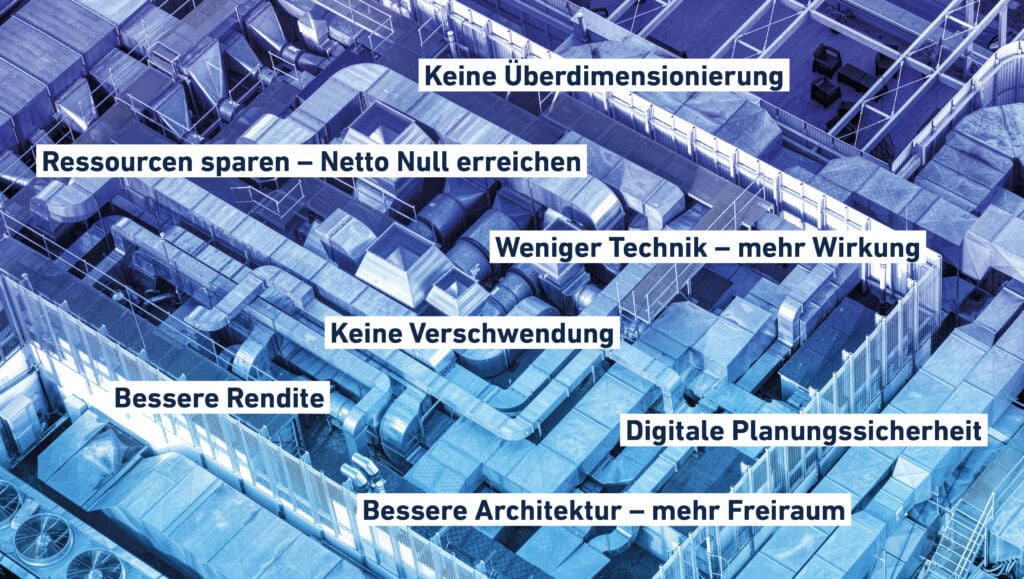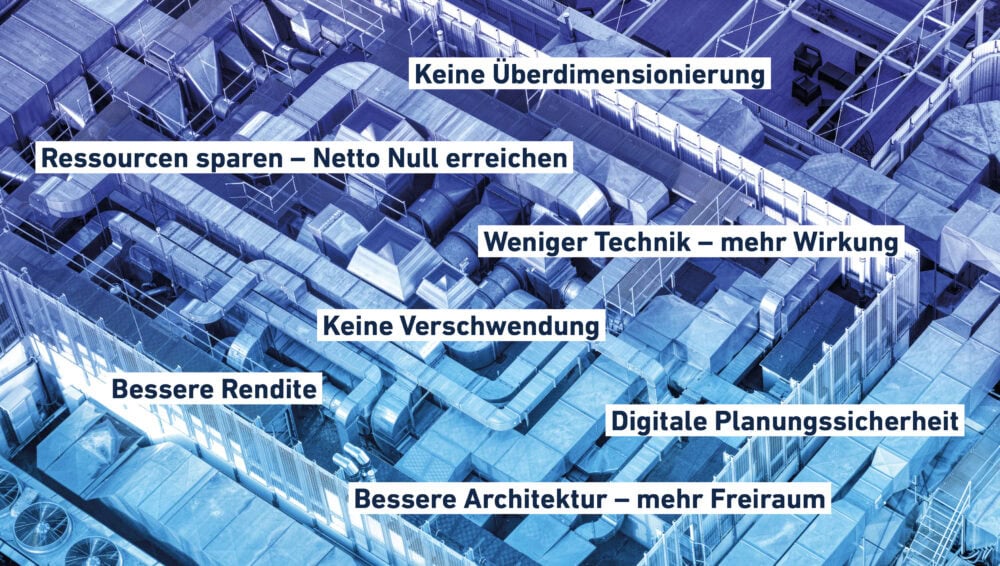THE AFC LESSTECH PRINCIPLE
AFC's LessTech principle stands for intelligent building planning without oversizing. CEOs Dr. Daniel Gubler and Dr. Philip Lengweiler explain the "less and better technology".

"The most sustainable building component is the one that doesn't exist." What does this mean for the AFC planning approach?
Dr. Daniel Gubler: LessTech stands for a paradigm shift: away from a focus on technology and towards thinking in terms of goals and needs. Instead of simply providing systems, we ask: What does the user really want to achieve? In this way, we avoid unnecessary technology and simplify planning.
Dr. Philip Lengweiler: We analyze buildings functionally and develop simple but effective systems - taking existing structures into account. "Anyhow elements" such as underground garage entrances are used for ventilation, for example. This creates lean, economical and sustainable solutions.
DG: With our digital test bench, we quantify the interaction of all components. This allows target values to be reliably achieved - without oversizing or undersizing.
PL: Added to this is our knowledge of standards and leeway. With clever interpretation, real simplifications can be achieved without sacrificing safety or comfort.
What errors in thinking hinder sustainable planning?
PL: We often plan from the point of view of the technology rather than the user. It's not about "a heating system", but about comfort - a subjective feeling that depends on many factors. Understanding needs holistically makes planning easier and more targeted.
DG: Another misconception is "fear surcharges": systems are oversized out of concern about undersizing - expensive, inefficient, complex. Today, digital tools enable more precise planning with clear target values.
PL: If we think consistently from the user's perspective and keep an eye on the overall effect, we automatically create leaner, better coordinated systems.
DG: Less technology does not mean less quality, but more efficiency and trust through the targeted use of sensible components.
What is the core principle of LessTech?
PL: No oversizing, no waste of resources, no unnecessary weak points. We only plan what is necessary - and use what already exists. This reduces sources of error and risks.
DG: The advantages: more robust buildings, lower construction costs, lower operating costs - both in terms of energy and maintenance. This increases cost-effectiveness over the entire life cycle.
PL: LessTech also allows us to plan more precisely - with a focus on comfort, sustainability and quality. This saves money and minimizes late, expensive adjustments.
What role does simulation play?
PL: Simulations prove the effectiveness of lean systems - in the planning phase and when changes are made later. They create security and traceability.
DG: Our digital model is a realistic representation of the building - including thermal, usage and climate. This allows us to precisely check the effects on comfort, performance and energy consumption.
What does lifecycle planning mean for AFC?
DG: Buildings are constantly changing. For us, planning does not end with commissioning - we also support operation and further development.
PL: We use digital twins to continuously document, adjust and create transparency for ESG and monitoring.
DG: In this way, we not only optimize systems, but also economic efficiency - sustainably and holistically.
Read the full interview on our website (Click here link)!
Founded in 1995 as a spin-off from ETH Zurich, AFC is now the market leader for fire protection, sustainable construction and building simulation. With digital tools and interdisciplinary expertise, we harmonize economic efficiency, sustainability and regulation. We support investors, owners, architects and planners in the strategic development of their portfolios with customized concepts for comfort, energy efficiency and safety.









